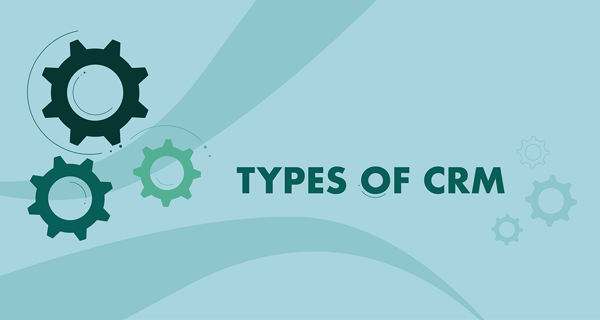Facing the challenge of delivering excellent customer experiences?
You’re not alone.
From adapting to the digital demands of a diverse customer base to overcoming internal barriers and leveraging data for personalization - today’s businesses have their work cut out for them when it comes to improving the customer experience.
In this article, we reveal five customer experience challenges, and provide you with the knowledge to turn potential pitfalls into revenue growth.
Evolving Customer Expectations
Keeping up with customer expectations is paramount for businesses to thrive.
Adapting to these changes is not a luxury but a necessity for maintaining a competitive edge.
Businesses need to comprehend and cater to customer needs by leveraging strategies such as market research, active monitoring, and robust feedback mechanisms.
This approach helps build strong, long-lasting relationships with customers, fostering loyalty and trust.
Adaptability to market trends and technological advances forms the cornerstone of a thriving business. It requires not only investment in innovative solutions but also a strategic approach to using customer insights.
Properly gathering and analyzing customer data and feedback is the key to personalizing experiences and addressing the high expectations set by technological advancements.
Understanding generational differences
One of the challenges businesses face in meeting evolving customer expectations is understanding the nuances of generational differences in preferences and behaviors.
Each generation has unique customer service expectations, requiring a tailored approach for effective engagement.
So, how do businesses cater to these diverse preferences without losing sight of their core values?
The answer lies in gaining key insights into customer behavior across different generations.
By understanding the expectations and preferences of different age groups, businesses can tailor their offerings accordingly, ensuring a positive experience for all customers.
This approach not only addresses the experience challenges but also offers an opportunity to gain a competitive edge in the market.
Adapting to new communication channels
Customers prefer a variety of technology-assisted customer service channels, including:
Adapting to these new communication channels is not just about adding new service options, but about integrating them seamlessly to offer a consistent customer experience.
But adapting is easier said than done.
Crafting a consistent customer experience across various communication channels is a significant challenge for businesses. For instance, a grocery store chain may decide to add a DoorDash delivery option to meet customer expectations.
This involves:
- Placing customer response mechanisms across all channels
- Ensuring seamless integration
- Maintaining the brand’s reputation for superior customer service.
Personalizing the Customer Journey
In the era of customer-centric business models, personalizing the customer journey is more than a good-to-have feature; it’s a necessity.
Personalized customer experiences significantly boost user engagement and customer satisfaction, leading to higher conversions and revenue.
When customers enjoy personalized experiences, they tend to show greater brand loyalty and are more likely to engage in repeat business and referrals.
The demand for personalization is so high that 72% of customers expect companies to recognize them as individuals and understand their customer preferences.
However, inadequate personalization can lead to higher customer churn as it fails to meet customer expectations for a tailored experience.
Therefore, businesses must invest in gathering and analyzing customer data and implementing targeted marketing strategies to deliver personalized experiences.
Gathering and analyzing customer data
Data is your secret weapon. But scattered data across several platforms can hinder the development of a comprehensive customer profile, affecting the customer experience.
Thus, consolidating customer data is crucial for maintaining continuity and effectiveness in the customer journey.
Moreover, insufficient customer data can cause customer experience efforts to fall short.
This underscores the necessity of robust data collection and management.
As a company grows, scaling the management of customer data presents a three-pronged challenge requiring proactive strategies for data scalability.
To overcome these challenges, businesses should implement customer response mechanisms across all channels and constantly evaluate the gathered feedback.
Implementing targeted marketing strategies
Collecting and analyzing customer data is just the beginning.
The next step is leveraging this data to implement targeted marketing strategies.
Personalized marketing campaigns, created based on detailed customer profiles, lead to more relevant and effective communication.
Detailed customer profiles enable businesses to send targeted communications that resonate with each individual’s preferences and needs, enhancing the customer experience.
In addition, segmenting customers into distinct categories allows for more personalized marketing and support initiatives, which can improve customer satisfaction.
Therefore, using product analytics is a key method for businesses to implement targeted marketing strategies effectively, addressing the challenge of personalization.
Overcoming Organizational Silos
While personalization is crucial, businesses also need to focus on overcoming organizational silos to deliver a consistent customer experience.
Organizational silos are formed when departments within an organization fail to communicate effectively, leading to a fragmented understanding of company goals.
This results in disjointed customer experiences as they create inconsistencies and competing objectives across different touchpoints, obscuring the organization’s view of the customer’s journey.
So, how can businesses overcome these silos?
Developing a unified organizational vision can realign varied departmental goals with the overall mission of the company, which is crucial for maintaining a customer-centric approach across the organization.
Additionally, companies need to foster collaboration between teams by creating a customer-centric culture, connecting customer data, and building cross-functional teams to facilitate seamless communication and shared understanding.
Creating a shared vision
Creating a shared vision across the organization is a vital step towards overcoming organizational silos.
Establishing this shared vision is crucial for ensuring a consistent customer experience.
A shared vision across departments can prevent individual departmental goals from diverging and maintain a consistent focus on the customer.
Furthermore, creating a shared understanding among the team on how users experience the product helps the whole team prioritize effectively and avoid project management challenges.
This not only ensures a customer-centric approach but also fosters a culture of collaboration and mutual understanding, paving the way towards a truly customer-focused organization.
Encouraging cross-functional collaboration
While a shared vision is crucial, it needs to be complemented with cross-functional collaboration.
Strong leadership is crucial for fostering a culture of collaboration among different departments.
Not only does this improve communication, but it also creates an environment where collaboration can thrive, thanks to interdepartmental team-building initiatives.
When departments work together seamlessly, they are better equipped to gain insights on customer needs and enhance the overall customer experience.
This approach not only breaks down organizational silos but also creates a cohesive, customer-centric culture that is geared towards delivering exceptional customer experiences.
Leveraging Technology for Enhanced CX
Leveraging technology is no longer an option but a necessity for enhanced customer experience.
Incorporating technology such as AI and automation helps businesses understand and respond to customer behaviors and preferences, thereby optimizing personalization.
Automated ticketing systems enhance customer service efficiency, and prompt responses can prevent customer frustration and reduce churn.
Tools like interactive voice response (IVR) systems direct customers to the appropriate service agents, further improving service efficiency.
Businesses that invest in the right tools to gather and analyze customer data can leverage these insights to enhance customer experiences.
However, selecting the right tools and software is just the first step; these need to align with business goals and employees should be trained in their use.
Choosing the right tools and software
Choosing the right software is a significant part of leveraging technology for enhanced CX.
Managing and integrating data cohesively across departments is crucial in avoiding a fragmented customer experience.
To support customer service, it is essential to use technology to enrich customer experiences without eliminating the opportunity for personal interaction with live representatives.
Chatbots, for example, can significantly improve efficiency for both customers and service centers when well-designed; however, poor chatbot design can result in increased customer frustration.
Investing in text analytics and customer sentiment analysis tools is recommended to process and integrate qualitative customer feedback into customer experience processes.
This way, technology can serve as an enabler in enhancing the customer experience, rather than being a hindrance.
Integrating technology with existing processes
While choosing the right tools and software is crucial, the true challenge lies in integrating this technology with existing processes.
This requires securing leadership support as it involves investment in customer experience software, retraining the workforce, and implementing assistive technology.
This integration is not just about technological changes; it’s about cultural changes as well.
It’s about fostering an environment where technology is viewed as an enabler for superior customer service, not as a disruptor.
When integrated effectively, technology can streamline processes, enhance productivity, and most importantly, elevate the customer experience.
Measuring and Improving Customer Satisfaction
An essential aspect of mastering customer experience challenges is measuring and improving customer satisfaction.
KPIs for customer experience may encompass a variety of metrics such as customer satisfaction scores, response times, and feedback analysis.
Additionally, Net Promoter Scores, resolution rates, and customer retention rates are also important indicators to consider.
KPIs influenced by customer experience include website response time, call center hold time, product returns, warranty claims, Net Promoter Score, customer lifetime value, and customer churn rate.
These metrics are crucial in assessing the impact of CX on business performance..
But how do businesses identify and address common customer experience problems?
Here are some strategies:
- Use tools like Net Promoter Score to analyze customer feedback and measure customer satisfaction with new features.
- Identify customer pain points and address them directly.
- Measure and understand customer behavior’s impact on key performance indicators (KPIs) like user satisfaction.
- Prioritize customer experience tasks effectively based on data and insights.
By implementing these strategies, businesses can improve their customer experience and address common problems effectively.
Establishing key performance indicators (KPIs)
Establishing key performance indicators (KPIs) is a crucial step towards measuring and improving customer satisfaction.
Important customer satisfaction KPIs include:
- Net Promoter Score (NPS)
- High raters in surveys
- CSAT score
- Industry NPS benchmarks
- Brand perception
Consistency in measuring customer satisfaction through surveys is crucial for setting internal goals and recognizing trends in customer satisfaction over time.
Using a journey-based approach to measure and analyze customer experience can help overcome the challenge of quantifying CX return on investment.
Quantifying the impact of customer experience efforts with hard metrics is essential for obtaining a clear view of the return on investment, which is critical for budget approval and strategic decisions.
However, using incorrect KPIs can negatively affect the customer experience and potentially harm the company’s revenue.
Therefore, establishing clear customer experience goals and metrics is important to maintain and improve each customer touchpoint.
By leveraging customer journey analytics, businesses can better understand and optimize their customer experience efforts.
Analyzing customer feedback for actionable insights
Gathering and reviewing customer feedback through customer interaction and customer conversations is crucial for understanding customer satisfaction and making improvements to products and services.
Implementing a customer feedback loop can help businesses increase customer loyalty by setting clear expectations for follow-up and providing personalized responses.
Creating better customer experiences involves collecting voice-of-the-customer feedback, sharing it company-wide, responding effectively, and asking follow-up questions to deepen customer relationships.
Addressing service problems allows businesses to identify and resolve weaknesses, fostering continuous improvement and adaptation to evolving customer needs through effective customer interactions.
Monitoring different communication channels ensures that customer feedback is consistent and quality, forming a well-rounded perspective on customer satisfaction.
Conclusion
Mastering customer experience challenges isn’t easy.
It requires a comprehensive, customer-centric approach that spans across understanding and adapting to evolving customer expectations, personalizing the customer journey, overcoming organizational silos, leveraging technology, and measuring and improving customer satisfaction.
These areas are interlinked and influence one another, creating a complex but manageable ecosystem that businesses need to navigate to stay competitive.
Put simply:
Businesses that prioritize customer experience thrive in the modern business world. The journey may be full of challenges, but the rewards of customer loyalty, enhanced brand reputation, and increased revenue are well worth the effort.
Ready to see how SuperOffice can help you solve these customer experience challenges?
Book a 30-minute meeting with one of our CRM experts to discuss your business goals and how you can use CRM to reach them.



